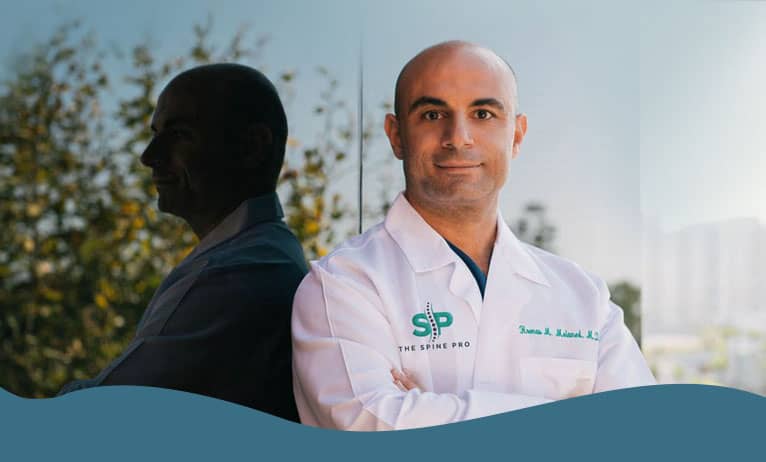
What is SI Joint Pain?
SI stands for sacroiliac. The sacroiliac joint is a joint structure that connects the large, curved iliac bone at the top of your pelvis to the sacrum, which is the triangular shaped bone in the lower back. Your sacroiliac joint is an important joint that supports the full weight of your body. If an SI joint is misaligned, or loose, it can be painful.
What are the symptoms of SI Joint pain?
• Any pain in the buttocks, hips, lower back or lumbar spine, pelvis, groin and referred pain from the legs
• Pain when standing from a seated position
• Numbness or weakness in legs
• Pain from one of the SI joints
What causes SI Joint pain?
Trauma
A car accident, sports injury or a fall on your backside can cause SI joint pain. You can also damage it lifting heavy objects and twisting in such a way that you stress the joint that connects the two bones.
Pregnancy
Pregnancy is another cause of SI Joint pain. The body naturally prepares for childbirth by loosening the SI joint ligaments by producing a hormone called, appropriately, relaxin. This relaxation allows the pelvis to enlarge as the uterus grows and the baby develops. The core muscles that surround the pelvis become stretched and can begin to ache. The mother-to-be will gain weight which also stresses the newly relaxed joints. Often, in the last trimester, the mother-to-be’s walking pattern is often altered. All of these factors contribute to SI joint pain during pregnancy.
Pregnancy can cause hyper-mobility of the joint which is high movement or looseness. There may be more friction in the joint, uneven wear and improper alignment that can generate a sharp pain at the rear of the pelvis.
Long-term Stress
Long-term stress on the SI joint such as uneven leg length, scoliosis or hip replacement can aggravate or loosen the SI Joint and cause pain. Any prior infection of the SI joint can contribute to SI joint pain, as can recent lumbar back surgery or using the iliac crest bone as a source for bone graft material.
Osteoarthritis
SI joints are susceptible to the degenerative effects of osteoarthritis. Due to wear over the years, the cartilage of the SI joints will weaken. The loss of cushioning and flexibility and the persistent rubbing of the iliac and the sacrum bones will eventually impede movement, generate pain and promote the growth of bone spurs.
Osteoarthritis is a degenerative process that wears down the cartilage of the SI joints. Without proper cushioning and lubrication, the continual rubbing of the bony surfaces of the joint will inhibit movement, generate pain, and promote the growth of bone spurs.
Osteoarthritis causes hypo-mobility of the SI joint. Hypo-mobility simply means low movement. Due to the degenerative action of arthritis, the ligaments connecting the two bones lose elasticity. The SI joint can become very stiff and even lock-up, causing pain and irritation of the surrounding soft tissues.
How is SI Joint pain treated?
Women who are pregnant should consult a physical therapist for specialized exercises and procedures for their SI joint pain. Dr. Melamed will provide a customized opioid-free treatment program to manage SI joint pain during and after pregnancy.
For patients whose SI joint injury is related to trauma or osteoarthritis, Dr. Melamed will develop a nonsurgical treatment that avoids opioids and treats the causes of the SI joint pain. Rest and relaxation for a few days can help. If your SI joint pain is mild, over the counter nonsteroidal anti-inflammatory drugs (NSAID) such as aspirin, naproxen, and ibuprofen may relieve pain, and reduce inflammation.
For intense pain, some doctors may prescribe opioid-based pain relievers and muscle relaxants. Dr. Melamed may suggest using less addictive treatments such as TENS systems which can reduce localized pain in the SI joint region. Epidural corticosteroid injections may be recommended. Radiofrequency ablation can be used to disable nerves in the area around the SI joint.
Dr. Melamed’s holistic treatment programs combine the best of traditional medicine with the best of integrative medicine. A typical program may feature physical therapy sessions that include range-of-motion and stretching exercises to tone the SI joints. He may recommend alternative treatments such as acupuncture, Tai-Chi and yoga to reduce pain, improve balance and stretch muscles near the pelvis.
Some patients find that an SI joint brace relieves stress and pain.
Surgery is often not needed to treat SI joint disorders.
Start fighting back pain today.
Click on the “Schedule Appointment” button at the top of this page, or call Dr. Melamed’s office for more information. There is no better time than today to start the journey to a life without back pain. Call us at 424-21-SPINE



